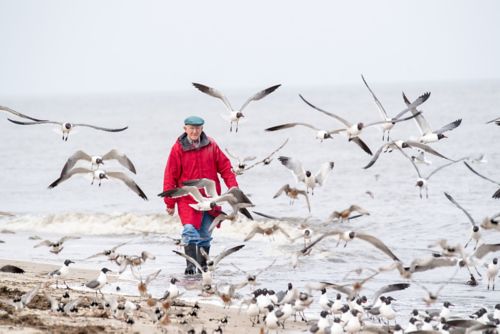St. Jude Family of Websites
Explore our cutting edge research, world-class patient care, career opportunities and more.
St. Jude Children's Research Hospital Home

- Fundraising
St. Jude Family of Websites
Explore our cutting edge research, world-class patient care, career opportunities and more.
St. Jude Children's Research Hospital Home

- Fundraising
St. Jude's contributions to avian bird flu vaccines
Controlling avian influenza is probably not the first thing that comes to mind when you think of the work we do here at St. Jude, but it can be an important part of accomplishing our mission. Our researchers played an integral role in the discovery that avian influenza outbreaks can lead to catastrophic human influenza outbreaks. These outbreaks tend to hit children particularly hard, especially those like our cancer patients who are immune-compromised during their treatment. We share technology from our long running influenza research program at St. Jude through licensing efforts with companies that have used it to help control avian influenza. Two examples are highlighted below:
TROVAC AIV H5
n the early 2000’s, influenza received increasing attention due to widespread outbreaks of the H5N1 avian virus among poultry in Asia. This "bird flu" strain would jump from birds to humans; killing people in Thailand, Vietnam, Cambodia and Indonesia. Luckily, that strain did not easily transmit from human to human, but many scientists feared it would only be a matter of time until the virus mutated to do so, potentially triggering a global pandemic. Governments and private companies around the globe began a desperate race to make human and avian influenza vaccines to curtail the spread of this deadly virus. Fortunately, a small group of researchers at St. Jude had already been working in this area for decades and were busy addressing this problem.

Dr. Robert Webster
In the 1980's, Dr. Robert Webster provided a clone containing the hemagglutinin (HA) gene from an H5 avian influenza strain to a small company, Virogenetics (now part of Sanofi), under the terms of a standard material transfer agreement (MTA) for research into the development of an avian vaccine. Virogenetics inserted that gene into an attenuated strain of a fowl pox virus to generate an avian vaccine. In 1988 Virogenetics entered into a license agreement with St. Jude to further characterize and commercialize the research vaccine, resulting in what is now known as TROVAC AIV H5.
Virogenetics received a conditional Veterinary Biological Product License in the US from the US Department of Agriculture in order to sell TROVAC AIV H5 in 1998. TROVAC AIV H5 could be administered to chickens on the day they hatched, and is fully efficacious after one dose. In less than 10 years, over one billion doses of the TROVAC AIV H5 vaccine were safely administered in Mexico, Guatemala, El Salvador and Vietnam.
Poulvac® FluFend H5N3 RG
In 2004, Fort Dodge Animal Health (a division of Wyeth at the time, and later Pfizer) collaborated with members of St. Jude's Virology Division to develop an avian vaccine to protect against the H5N1 virus, which evolved into a license agreement later that year. The seed stock for the vaccine was made using the plasmid rescue system developed at St. Jude. St. Jude made the seed stock used by Fort Dodge to prepare prototype vaccines within an established seed-lot system to develop Poulvac® FluFend H5N3 RG, a viable large-scale commercial product.
In 2006, Fort Dodge announced the vaccine was conditionally approved by the National Agency of Veterinary Medicine of France for use in controlling the H5N1 avian flu virus spreading in France. The French government then requested 7 million doses of the vaccine to begin its control and eradication program. They began by vaccinating outdoor ducks to prevent them from contracting avian influenza from migrating birds. Fort Dodge continues to promote the use of this vaccine as the best way to protect bird populations from the spread of this deadly virus